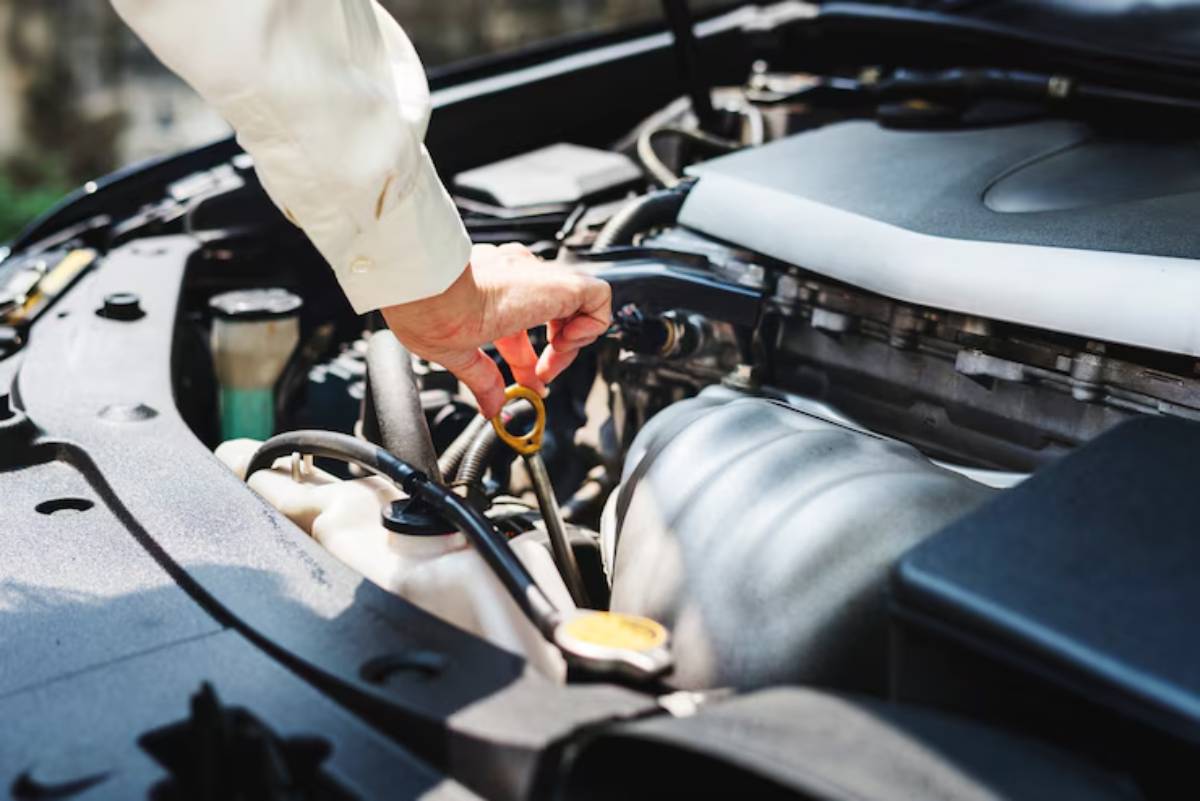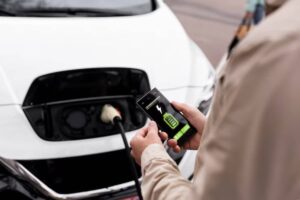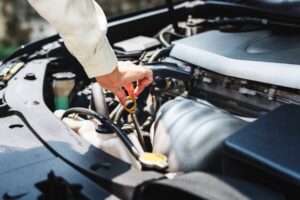The Automobiles Blog

DIY vs Pro Maintenance: What’s Best for Hybrids?
Hybrid cars are known for being clever, efficient, and surprisingly low-maintenance. But when it comes time to lift the bonnet, many hybrid owners wonder: Should I try to handle this myself or leave it to the professionals?
It’s a fair question. With more hybrid models on UK roads than ever, drivers are becoming more hands-on. Yet, hybrids combine high-voltage systems, software updates, and sophisticated components that differ from traditional petrol vehicles.
In this guide, we’ll break down the pros and cons of hybrid DIY maintenance and professional car service, helping you decide which route works best for your time, skill level, and vehicle’s long-term health. Whether you’re a weekend tinkerer or a cautious first-time hybrid owner, you’ll gain clarity on how to approach your car repair decisions with confidence.
Understanding Hybrid Maintenance Basics

Before weighing your options, it’s essential to understand how hybrid car maintenance compares to regular vehicles.
What Makes Hybrid Maintenance Unique?
- Electric motors and high-voltage battery packs require specialist handling
- Regenerative braking systems alter how brakes wear and are maintained
- Dual cooling systems may exist for the engine and the battery
- Software updates can impact driveability, battery charging, and emissions
- Fewer oil changes and brake replacements, but not fewer responsibilities
With that in mind, let’s explore when a DIY approach works well — and when it might be time to call in the experts.
DIY Hybrid Maintenance: Where It Works
You don’t need a degree in engineering to handle basic upkeep on your hybrid. In fact, there are several safe, cost-effective tasks you can confidently manage from your own driveway.
Top Tasks You Can Handle Yourself
1. Tyre Pressure and Tread Checks
- Use a reliable gauge and top up as needed
- Keep tyres properly inflated to protect fuel economy and regenerative braking
2. Wiper Blade Replacement
- Easy, tool-free task you can do in under five minutes
- Enhances safety and visibility in poor weather
3. Cabin Air Filter Changes
- Accessible behind the glovebox in most models
- Keep your HVAC system efficient and your air clean
4. Washer Fluid Top-Up
- Simple open-and-fill job that prevents headaches during bad weather
5. Visual Checks for Leaks or Unusual Wear
- A monthly under-bonnet and tyre inspection helps you catch early issues
For more examples of proactive maintenance you can do yourself, check out our monthly hybrid maintenance checklist.
Benefits of DIY Maintenance
- Cost savings: No labour costs on basic tasks
- Convenience: Perform checks on your own schedule
- Familiarity: Understand your hybrid better with each check
- Quick fixes: No need to wait for a service appointment
But There Are Limitations…
Despite these wins, DIY maintenance has clear boundaries, especially with a hybrid.
You may struggle with:
- High-voltage battery systems (dangerous without proper training)
- Brake fluid and inverter coolant changes (system-specific processes)
- Software updates (require dealer tools)
- Diagnostic codes (OBD-II scanners may not read hybrid-specific faults)
- Electrical repairs (risk of shock or permanent damage)
It’s one thing to change a filter — quite another to dismantle a hybrid battery cooling system. That’s where the pros step in.
Professional Maintenance: When to Trust the Experts
Some jobs simply require specialist knowledge, tools, or access to manufacturer systems. Hybrids often fall into this category due to their unique blend of mechanical and electronic components.
Top Tasks Best Left to Professionals
1. Battery Health Checks and Reconditioning
- Requires scan tools and safety gear
- Professionals can detect voltage imbalance or thermal issues early
2. Hybrid Transmission Fluid Changes
- Needs the correct fluid, draining method, and fill levels
- Mistakes can cause irreversible damage to the eCVT
3. Brake System Servicing
- Regenerative braking integration makes it harder to diagnose pad wear
- Incorrect fluid handling can damage hybrid braking performance
4. Software and Firmware Updates
- Dealerships and certified garages have access to manufacturer updates
- Updates may enhance fuel economy or fix hybrid system bugs
5. Cooling System Repairs
- Many hybrids have a second cooling system for the battery or inverter
- Requires bleed tools, specific fluids, and often dealer-only access
Benefits of Professional Hybrid Service

- Expertise: Technicians trained specifically for hybrid systems
- Safety: High-voltage systems handled with the right tools and PPE
- Warranty Compliance: Avoid voiding factory warranties by doing it wrong
- Advanced Diagnostics: Access to fault codes and service bulletins
- Peace of Mind: Assurance that your hybrid is roadworthy and optimised
But It’s Not Without Drawbacks
- Higher cost than DIY, especially at dealerships
- Less flexible scheduling
- Potential upselling of services you may not need
Still, in high-stakes systems like the hybrid battery, professional car service isn’t just smart — it’s essential.
Hybrid DIY vs Pro: Task-by-Task Breakdown
Here’s a handy guide to help you decide who should handle what:
| Task | DIY-Friendly | Pro Recommended |
| Tyre pressure & tread check | Yes | |
| Cabin air filter replacement | Yes | |
| Washer fluid top-up | Yes | |
| Oil change | Maybe* | If unsure |
| Brake fluid flush | Yes | |
| eCVT fluid change | Yes | |
| Battery system diagnostics | Yes | |
| Inverter coolant replacement | Yes | |
| Software updates | Yes | |
| HV battery servicing | Absolutely |
* If you have the right tools and experience, and follow service manual instructions closely.
DIY Hybrid Maintenance Mistakes to Avoid
Even small errors can have big consequences. Here’s what not to do:
- Using the wrong type of oil or fluid — always match what’s in your manual
- Disconnecting the battery improperly — could trigger warning lights or system shutdown
- Attempting HV battery work without training — serious injury risk
- Skipping coolant checks — can lead to inverter or engine overheating
Being proactive is good. Being cautious is even better.
Cost Comparison: DIY vs Pro Over One Year
| Maintenance Item | DIY Estimated Cost | Pro Service Cost |
| Oil & filter change | £40 | £90–£130 |
| Cabin air filter | £15 | £30–£50 |
| Washer fluid | £5 | £10–£15 |
| Tyre rotation | Free (if DIY) | £20–£40 |
| Brake service | N/A | £120–£180 |
| Transmission fluid | N/A | £100–£150 |
| Battery diagnostics | N/A | £50–£100 |
As you can see, DIY can save money on routine tasks, but for critical systems, the extra cost of professional care brings long-term value.
What Do Hybrid Manufacturers Recommend?
Most hybrid manufacturers, including Toyota, Honda, Hyundai, and Ford, encourage basic DIY upkeep but recommend professional service for:
- High-voltage systems
- Software and diagnostic checks
- Transmission and braking maintenance
Following the official maintenance schedule — and having receipts or logs — helps protect your warranty and resale value.
When to Mix Both Approaches
You don’t have to choose one side exclusively. Many hybrid owners find a happy medium:
- Do your own monthly checks and simple replacements
- Book yearly hybrid inspections and complex fluid services with certified technicians
For example, switch your cabin filter and top off fluids at home, but let the pros handle the annual hybrid service for peace of mind.
It’s smart to handle what you can monthly, like fluid levels, tyre pressure, and basic checks, and then book a thorough annual hybrid check-up. Our annual maintenance musts for hybrid owners post outlines exactly what to expect and prioritise each year.
Conclusion: Choose the Right Tool (and Person) for the Job

Hybrid cars don’t have to be intimidating. But they do require respect for complexity and a willingness to learn — or to trust the experts when needed.
By understanding where your skills shine and where specialist knowledge is essential, you can build a smart hybrid maintenance routine that:
- Saves money on the small stuff
- Preserves safety and performance on the big stuff
- Helps your car run efficiently for years to come
So, what’s best for you? That depends on your comfort level, your toolkit, and your time. But whatever you choose, the most important thing is to stay consistent and informed.









